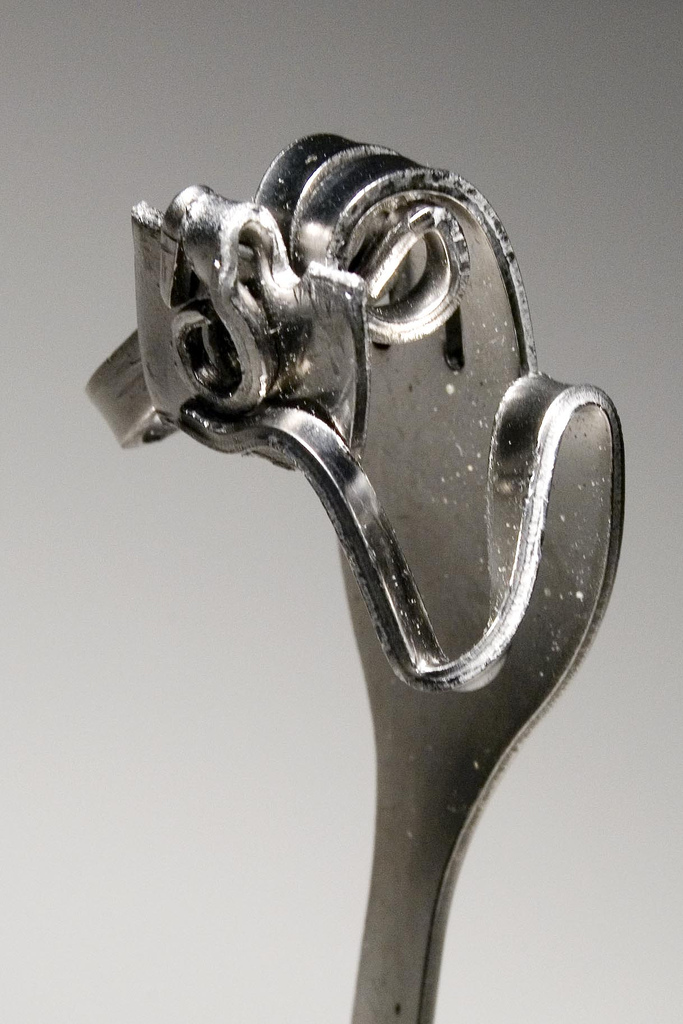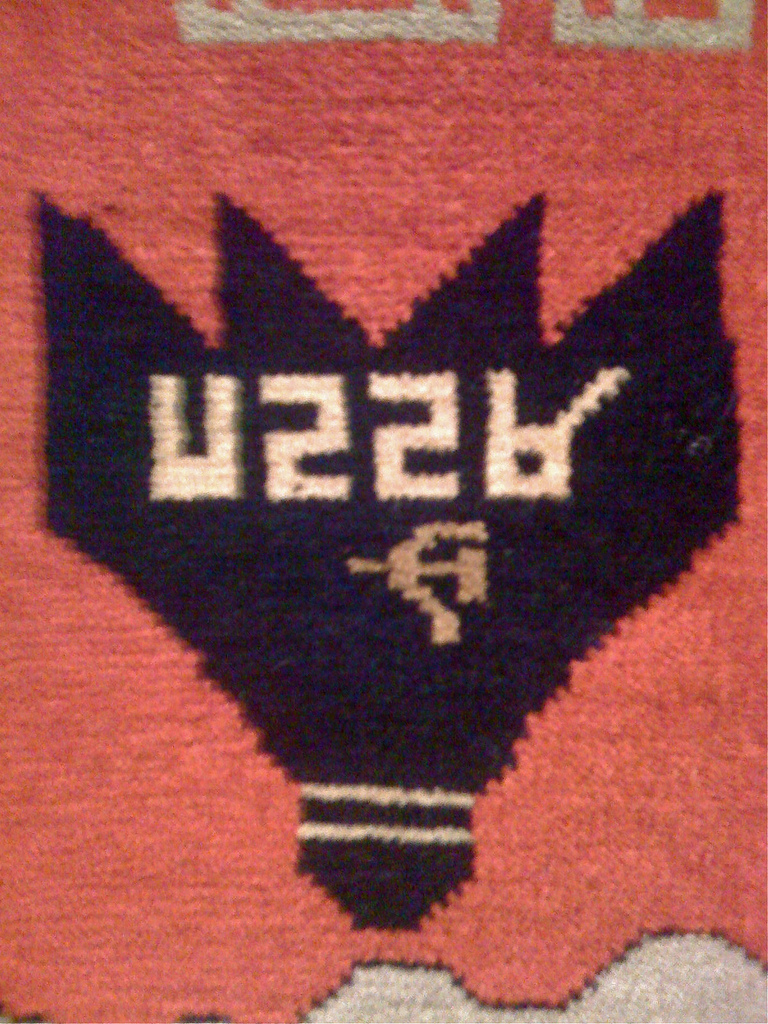As the song says, I like New York in June. New York City in August, though, is hotter and stickier than an elephant’s ass. For this precise reason, a substantial bulk of the people who can be found in Manhattan during the late summer – tourists and locals alike — retreat to the vast air-conditioned interior spaces of the city: movie theatres, retail outlets and art galleries.
This year, I was one of those people. I spent a week drifting across the city from gallery to gallery, pausing only for brief hydration breaks and the occasional slice from Ray’s. Call it the Iron Man of 21st century flânerie. The relatively empty streets made it feel like a week of Sundays, or possibly a shot from the Will Smith version of I Am Legend during one of the scenes when the vampire cannibal people are all dormant (I’m beginning to think about that film as a documentary of sorts).
One of the insights I’ve had over the years, and this is hardly an original observation, is that one of the most interesting things to do while in New York is to watch the people themselves. While part of the masses stomping through the icy caverns of the MOMA in August, though, it was hardly optional, as there were invariably people between me and what I thought I was there to see – the art. Readjusting my perspective to focus on the people, though, got me thinking.
MOMA policy differs from that of many of the other New York art galleries in an important respect: it allows (or at least tolerates) photography of the vast majority of the gallery’s permanent collection. The only “No photography allowed” sign I saw on this trip was in front of the James Ensor show, which was not on permanent display. While most museums still try to instil an air of almost religious, respectfully silent contemplation into their visitors – an attitude that explicitly excludes the taking of pictures, via the use of low-light conditions and grumpy people in polyester blazers stationed throughout the space – something else was happening in the MOMA. Nearly everyone in the gallery was busily snapping pictures of the art with a bewildering array of consumer photographic technology.
Some people concentrated on photographing the art itself, while others had friends and lovers pose beside it (throwing gang signs optional). I saw more than one person crooking their neck awkwardly to hold their audio guide handset between their ear and shoulder while they simultaneously attempted to snap an image of the subject of the handset’s discourse.
Walter Benjamin observed in the third version of his famous essay on “The Work of Art in the Age of Its technological Reproducibility” that while architecture and film are designed to be viewed simultaneously by large groups, painting isn’t. Up until the 18th century, the reception of painting took place largely in churches, monasteries and royal courts, where access to them was both graduated by space and mediated by class. Benjamin argues that modern attempts present paintings to the public have met with mixed success, because they are stripped of many of the earlier means of organizing and mediating the experience of viewing them. “[T]he same public which reacts progressively to a slapstick comedy, ” he writes, “inevitably displays a backward attitude toward Surrealism” {{1}}.
Does this still hold true in the context of the MOMA today? Benjamin was writing at a time when Surrealism and the other avant-gardes were attempting to produce a revolution in everyday life. Surrealist objects like Duchamp’s Readymades were an attempt to call the entire economy of precious works of art and art galleries into question. Today, these objects are ironically among the most venerated and valuable objects in museums and galleries worldwide. People flock to the MOMA to take pictures that duplicate the pictures of objects that they’ve already seen, whether on the Web, in coffee table art books, or on posters on a dorm room wall.
This need to experience a work of art as already mediated might well be the true face of Nicholas Bourriaud’s relational aesthetics, which argues that much contemporary art leans toward the participatory {{2}}: in order to experience a work of art today, perhaps we have to see it through our camera screens. Especially when it’s right in front of us.
In a passage that anticipates pretty much everything Marshall McLuhan would write some 40 years later, Benjamin covers this possibility as well: “The medium through which works of art continue to influence later ages is always different from the one in which they influence their own age.” For Benjamin, this later impact is constantly in flux, and fainter than it was initially. What interests me, though, is the notion that artists might only be able to produce the response that they desire from the public by when their work is approached “in an indirect manner” {{3}}. Simultaneously thinking about art as both an object in front of you and an image on the screen might be just such an indirect approach.
The point, as Slavoj Zizek argues in The Parallax View, is not to privilege one perspective over the other, breathlessly endorsing the digital or grumbling about how no one appreciates culture any more, but to think about the irreducible difference between the two {{4}}: we can’t have one without the other. The differences between a work of art hanging in a gallery and the print and digital images of it which are usually our first experience of it can be shocking – and instructive. When it’s on the wall in front of you, Dali’s “The Persistence of Memory” is REALLY SMALL. Monet’s “Water Lilies,” on the other hand, are on canvases so overwhelmingly huge that sitting in front of them feels like entering a 19th century panorama, the precursor of a digital virtual world. In Mondrian’s most geometric paintings, you can still see traces of human effort in the brush strokes, and the thickness of the paint varies across the canvas. A digital image on a camera or cell phone is no less material, but its materiality is different: 2 megapixels or ten? Colour, black and white, or sepia? Consigned to live forever on a hard drive or immediately uploaded to a blog, Facebook, Flickr or Picasa where it will be seen, commented on and recirculated by hundreds, thousands, or millions?
So what happens when we try to think about these possibilities simultaneously? We end up reconsidering our whole idea about what constitutes an art “object” at all. In 2000, Marjorie Perloff coined the term”differential media” to describe Kenneth Goldsmith’s Fidget, which is not so much an object as it is a network. Fidget is, variously, a musical score, several professionally tailored paper suits, a web-based Java application, a pair of large visual poems on paper and a performance piece as well as a book; no one node in the network takes priority. What Perloff argues is that such works indicate that “knowledge is now available through different channels and by different means” {{5}}. Which was, perhaps, the point of the Surrealist Readymades all along.
Originally published as “Alienated 14: Our Own Devices,” in Matrix 84, fall 2009: 50-51.
Featured image by Stacy Lynn Baum.
[[1]]http://www.marxists.org/reference/subject/philosophy/works/ge/benjamin.htm[[1]]
[[2]]http://docs.google.com/gview?a=v&q=cache:fol7u3wIPzcJ:www.creativityandcognition.com/blogs/legart/wp-content/uploads/2006/07/Borriaud.pdf+relational+aesthetics&hl=en&gl=ca[[2]]
[[3]]Benjamin, Walter. “The medium through which works of art continue to influence later ages.” Walter Benjamin: Selected Writings. Volume 1, 1913-1926. Ed. Marcus Bullock and Michael W. Jennings. Cambridge/London: The Belknap Press of Harvard University Press, 1996. 235.[[3]]
[[4]]Žižek, Slavoj. The Parallax View. Cambridge/London, MIT Press, 2006. 19.[[4]]
[[5]]Originally published in the back of Goldsmith’s _Fidget_ (Toronto: Coach House Books, 2000), this notion has been expanded into a longer essay, that appears in several places, including here: Perloff, Marjorie. “Screening the Page/ Paging the Screen: Digital Poetics and the Differential Text.” http://marjorieperloff.com/articles/digital-poetics-and-the-differential-text/[[5]]



